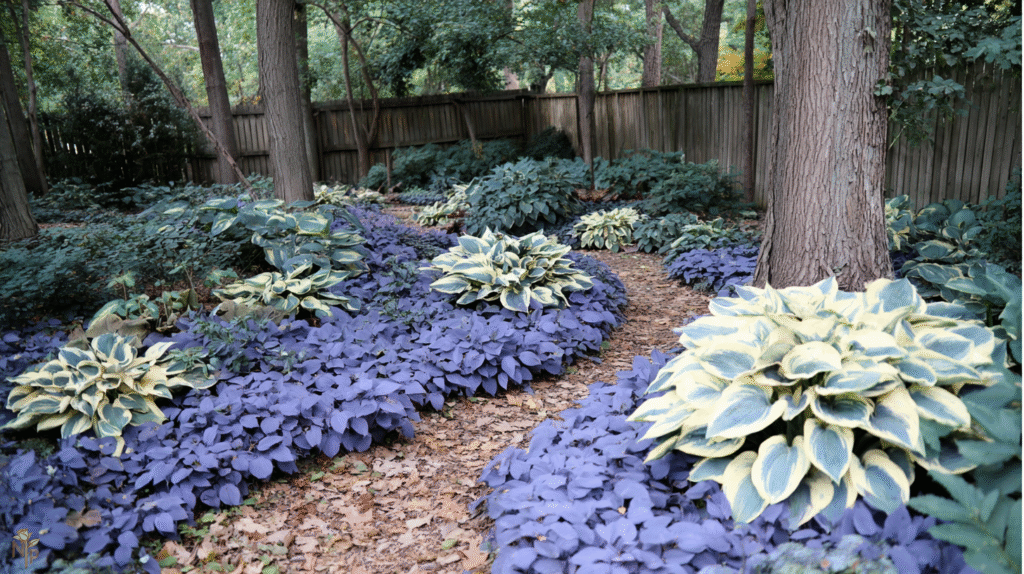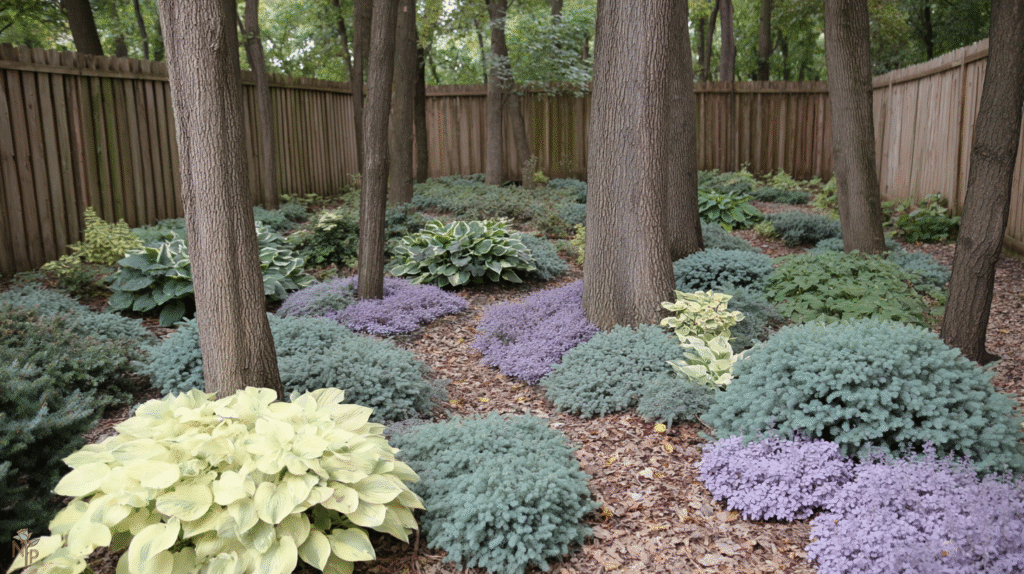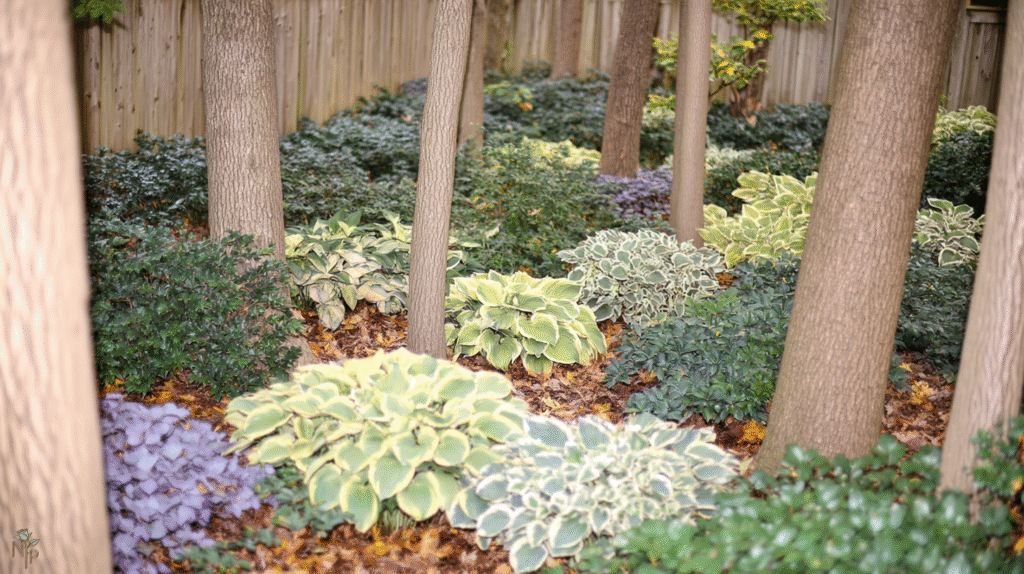My backyard is basically a cave with grass. Two massive oak trees, a neighbor’s maple hanging over the fence, and a shed that blocks the afternoon sun. I tried growing tomatoes back there once. They gave me three cherry tomatoes the size of peas and then gave up on life.
For five years, that shady wasteland was just dirt, moss, and sadness. Then my 74-year-old neighbor peered over the fence and said, “You need hostas, honey. Lots of hostas.”
Best advice I ever got. Now that former dead zone looks like something from a garden magazine. Thirty-two hostas and counting (yes, I have a problem), ranging from giants that could hide a toddler to tiny ones smaller than my hand. Here’s what I learned the hard way about which hostas actually thrive in deep shade versus which ones need a bit more light than advertised.
The Shade Isn’t All The Same Shade
This took me embarrassingly long to figure out. I kept buying hostas labeled “shade tolerant” and watching them either burn up or refuse to grow. Turns out there’s shade, and then there’s SHADE.
Light shade:
Gets maybe 4 hours of filtered sun. Under young trees or the north side of your house. Most hostas are happy here.
Part shade:
2-3 hours of morning sun, shade the rest. The sweet spot for 90% of hostas. This is my side yard situation.
Full shade:
No direct sun, ever. Under dense trees or between buildings. Only certain hostas will actually thrive here, despite what the tags say.
Deep shade:
Where you need a flashlight at noon. I’ve got a spot like this under my oak. Only three varieties haven’t given up yet.
That “shade plant” label at the nursery? Meaningless. I’ve learned to ignore it and go by actual experience.

The Unkillable Giants for Deep Shade
If your shade is so deep that moss is your only ground cover, these are your heroes:
‘Sum and Substance’ This beast gets 4 feet wide in my darkest corner where literally nothing else grows. Chartreuse leaves the size of dinner plates. Slugs supposedly hate it (they don’t hate mine, but they don’t destroy it either). Planted one three years ago. Now it’s so big I could use it as an umbrella.
‘Sagae’ Blue-green with cream edges, gets massive even in pretty dense shade. Mine’s under the oak where it gets maybe an hour of dappled light. Still pushes out 20+ leaves every spring. The frosted edges glow even in the dark. Makes my neighbor jealous every year.
‘Blue Angel’ True blue color, leaves bigger than my head. Grows slower in deep shade but still gets enormous. Takes three years to look impressive but then BOOM – prehistoric-looking giant. Mine survived the spot where I killed two azaleas and a rhodedendron.
Medium Hostas That Actually Perform in Shade
Not everyone wants dinosaur-sized plants. These are manageable but still impressive:
‘Patriot’ Green with white edges so bright they look painted on. Grows anywhere. ANYWHERE. I have one in dry shade under the maple where the roots suck up every drop of water. Still thriving after five years. If you can only buy one hosta, buy this.
‘Frances Williams’ Blue-green with yellow edges. Old-fashioned variety my grandma grew. Gets about 2 feet wide in shade. The only issue? Margins can burn in the afternoon sun, but in shade it’s bulletproof. Looks expensive but costs like $8 at Home Depot.
‘Gold Standard’ Chartreuse center with dark green edges. Changes color through the season – starts green, turns gold, then almost white by fall. In deep shade it stays more green, but still gorgeous. Multiplies like crazy too. Started with one, now have six from divisions.
‘Halcyon’ The bluest blue hosta that handles shade. Most blue hostas need some sun to keep their color. Not this one. Stays steel blue even in my darkest spot. Medium-sized, neat mound, never looks messy. Slug resistant too, though the slugs in my yard didn’t get that memo.
Small Hostas for Edges and Tight Spots
These little guys are perfect for bordering paths or filling gaps:
‘Blue Mouse Ears’ Tiny blue leaves shaped like… mouse ears. Stays under 8 inches tall. Cute as hell. I line my shade path with these. Thick leaves that slugs don’t bother. Takes forever to establish but worth the wait. People always ask what they are.
‘Pandora’s Box’ White center with green edges, miniature size. Grows maybe 6 inches wide. I tuck these between bigger hostas. They glow in deep shade like little lights. Expensive for the size but so unique.

The Variegated Showstoppers
Want hostas that make people stop and stare? Even in shade, these varieties put on a show:
‘Fire and Ice’ White center, green edges. The contrast is insane. In deep shade the white might be more cream, but still stunning. Grows medium-sized. Every non-gardener who sees mine wants to know where to buy it.
‘Stained Glass’ Gold center with dark green edges. Lives up to its name – literally glows in filtered shade. The gold is so bright it looks fake. Fragrant flowers too, which most hostas don’t have. My dog likes to sleep under it when it blooms.
‘June’ Blue-green edges with chartreuse center that changes to gold. Multi-colored all season. Mine’s in medium shade and the color changes are wild. Spring it’s one color, fall it’s completely different. Like having multiple plants in one.
The Weird Ones That Actually Work
Some hostas are just odd, but in shade gardens, odd is good:
‘Praying Hands’ Leaves grow upright and folded like praying hands. Bizarre looking. Takes deep shade like a champ. Everyone asks if it’s diseased. Nope, just weird. Adds vertical interest where everything else is mounded.
‘Red October’ Green leaves but the stems are bright red. In shade, the red really pops against all the green. Gets huge. The red intensifies in fall. Looks good even after the leaves get chomped by slugs because those red stems remain.
The Ones That Lied About Shade Tolerance
Learned these need more light the hard way:
‘Liberty’ – Supposed to handle shade. Mine rotted in deep shade. Needs at least part sun.
‘Paul’s Glory’ – Beautiful but needs morning sun to get that gold color. In deep shade it’s just green and sad.
Most white-centered varieties – They need more light to photosynthesize. In deep shade they just struggle and die. Trust me, I’ve killed four different white-centered types.
The Slug War (You’ll Lose But Fight Anyway)
Everyone says certain hostas are “slug resistant.” Those people have different slugs than me. My slugs eat everything, including the “resistant” varieties. But some definitely get less damaged:
Thick, waxy leaves do better. ‘Sum and Substance,’ anything with ‘Blue’ in the name, and ‘Minuteman’ show less damage. Thin-leaved varieties like ‘Guacamole’ get shredded.
My solution? Beer traps (they work but are gross), coffee grounds (sort of work), and accepting that some damage is just part of having hostas. Perfect leaves are overrated anyway.
Placement Tricks That Make a Difference
Under trees:
Plant at the drip line, not against the trunk. Tree roots will outcompete hostas for water right at the base.
Dry shade:
Add compost yearly. These spots need help retaining moisture. My hostas in dry shade get a 3-inch mulch blanket that I refresh every spring.
Wet shade:
Lucky you. Hostas go crazy in moist shade. Just watch for crown rot in really wet spots.
Near paths:
Keep them back 6 inches. Hostas get bigger than you think and you’ll be whacking them with the mower.

The Reality Check
Hostas in magazines look perfect. Mine have slug holes, bird poop, and occasionally get stepped on by the dog. They still look amazing from five feet away, which is how most people see gardens anyway.
The secret to a good shade garden isn’t finding the perfect plant – it’s planting enough hostas that the overall effect is lush even if individual plants aren’t perfect. Mass plantings hide a multitude of sins.
Start with three varieties – one giant, one medium, one small. I recommend ‘Sum and Substance,’ ‘Patriot,’ and ‘Blue Mouse Ears.’ Total cost maybe $35. Plant them, mulch them, water them the first year, then basically ignore them.
Three years later you’ll be dividing them, giving away pieces, and wondering how something so easy can look so good. Then you’ll become like me – the weirdo who gets excited about new hosta catalogs and has opinions about slug bait.
But at least your shady yard won’t look like abandoned property anymore. Mine went from neighborhood eyesore to “that house with the amazing shade garden.” All thanks to a bunch of plants that actually want to grow where nothing else will.






